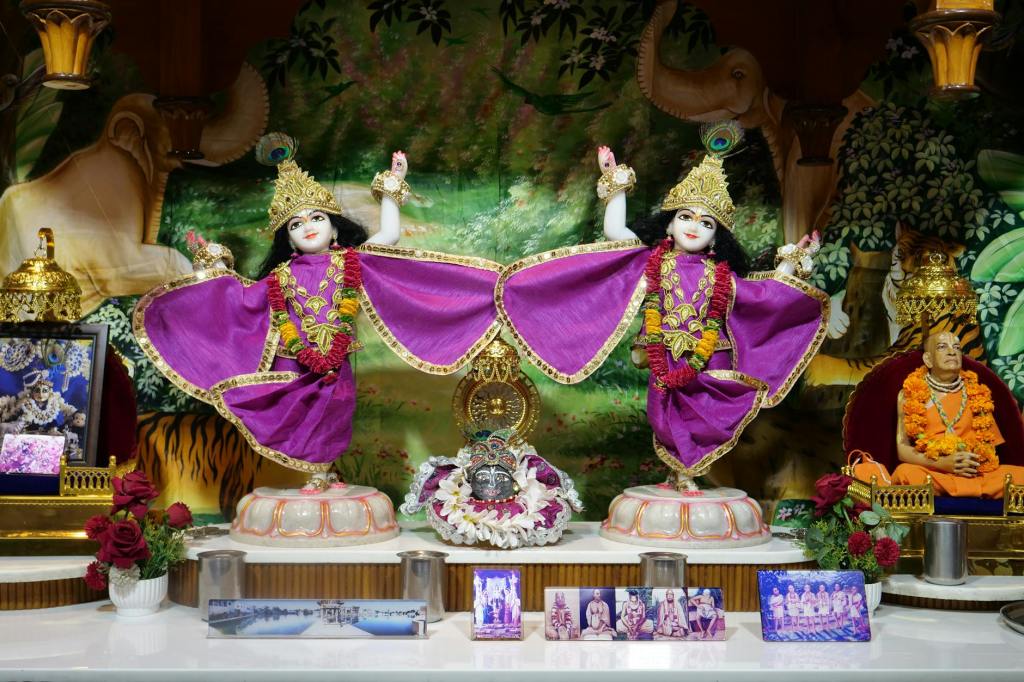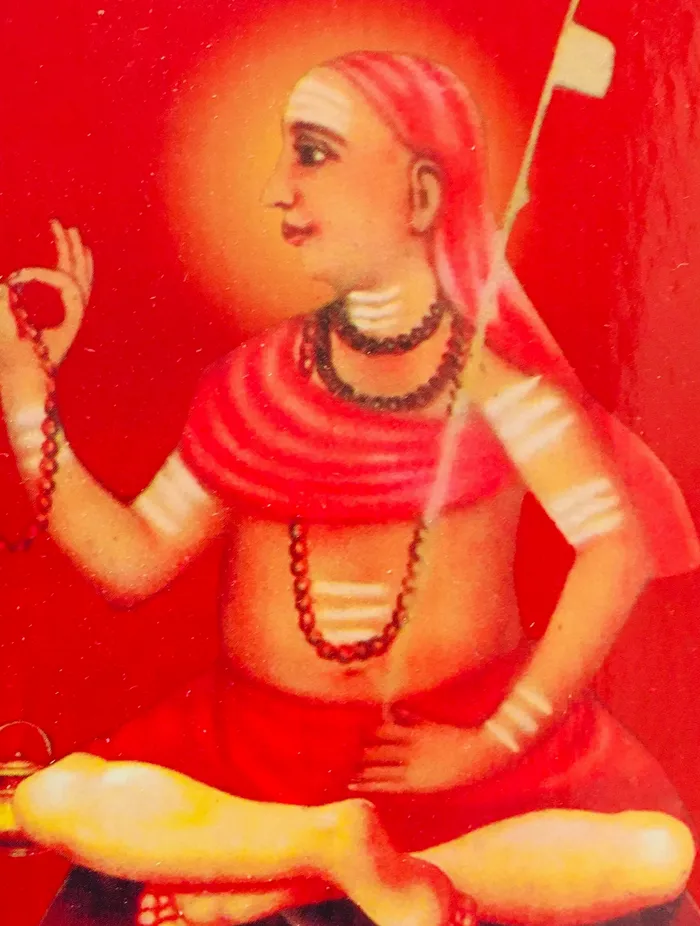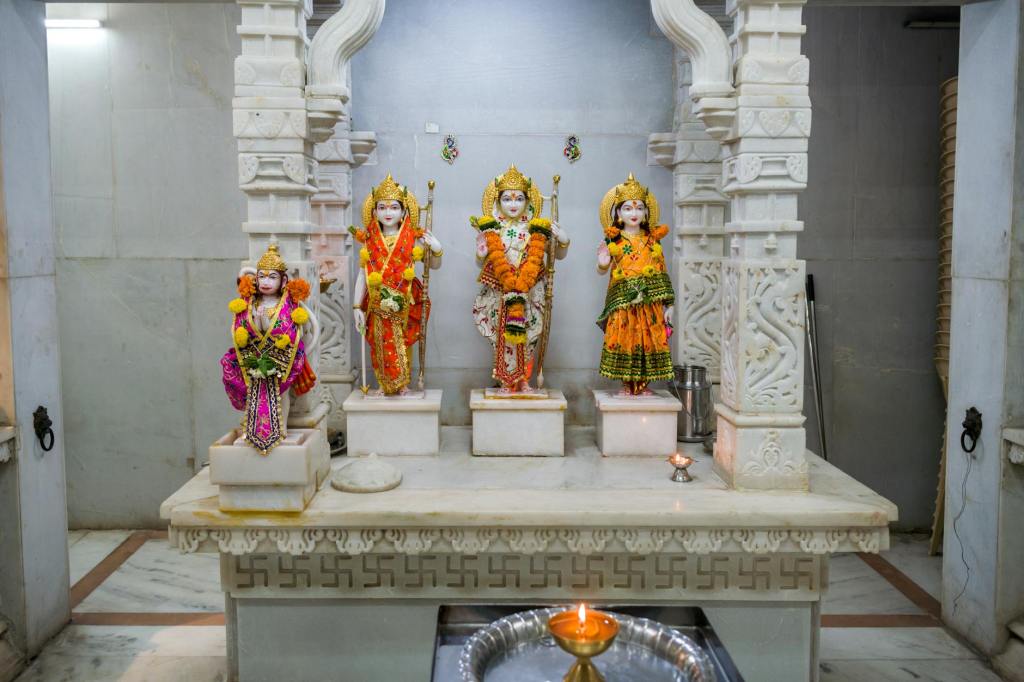Yellow is often associated with the divine and considered a sacred color. In spirituality, yellow is often associated with enlightenment, knowledge, and purity, representing a connection to the divine and a higher spiritual path.
- Spiritual Meaning of Yellow in Hinduism
- Importance of colors in Eastern Religions
- Importance of Yellow color in Yoga
- 10 Spiritual Benefits of Yellow Color
- Spiritual Meaning of Yellow Color in a Dream
- What energy does Yellow represent?
- Importance of Yellow Color in Psychology
- 5 Disadvantages of Yellow Color
Read more on The Cowherd:
- Spiritual meaning of Green
- Spiritual meaning of Red
- Spiritual meaning of Yellow
- Spiritual meaning of Blue
- Spiritual meaning of colors
Spiritual Meaning of Yellow in Hinduism
Many Hindu gods and goddesses are depicted wearing yellow clothing, such as saffron or turmeric colored robes, as a symbol of their divine status. The Peetambara, or yellow garment, is particularly significant in Hinduism as it is considered to be an expression of purity, knowledge, and enlightenment. It is often worn by saints, sages, and ascetics as a symbol of their spiritual achievements and devotion to the divine. Wearing a Peetambara is also seen as a means of achieving spiritual protection and purification, as well as inspiring others to seek a higher spiritual path.
Importance of Wearing Yellow Dress – Spiritual Meaning of Yellow
The use of yellow clothing in Hinduism, specifically the Peetambara, is a symbol of spiritual purity, enlightenment, and devotion to the divine. It is seen as a means of achieving spiritual protection and inspiring others to seek a higher spiritual path.
Golden yellow color is often associated with wealth, prosperity, abundance, and divinity in many cultures and spiritual traditions. In Hinduism, it is associated with the Sun God, Surya, and symbolizes the attainment of spiritual knowledge and enlightenment. In Buddhism, gold represents the qualities of wisdom and compassion, and is often used to symbolize the Buddha.
Peethambaram kara virajitha Chakra sankha,
A verse from Dhyana Shlokas of Srimad Narayaneeyam
Koumodhakee sarasijam Karunaa samudhram,
Radha sahayam Athi Sundara mandha hasam,
Vathalayesam anisam hrudhi bhavayami.
In Christianity, gold is associated with the divine, and is often used to represent the purity and glory of heaven. In alchemy, gold is seen as a symbol of perfection, and the ultimate goal of the alchemist’s spiritual journey. Overall, the golden color holds significant spiritual significance, representing the attainment of wealth, knowledge, and divinity.
Importance of Turmeric – Meaning of the Yellow Spice
Turmeric is known as the golden spice of India. Its scientific name is Curcuma longa but popularly known as haldi, haridra, manjal, etc. in Indian languages. It’s a super-spice whose beneficial effects include antibacterial, antiviral, anti-inflammatory, cardioprotective, hepatoprotective, nephroprotective, antitumor, antioxidant, antiseptic, radioprotective, and digestive activities.
Importance of colors in Eastern Religions
Colors play an important role in Hinduism, Buddhism, Jainism, and Sikhism, each with their own interpretations and meanings.
- Hinduism: In Hinduism, different colors are associated with different deities and symbolize various aspects of life and the universe. For example, red is associated with sensuality and energy, blue with the god Vishnu, and yellow with the god Ganesha. White symbolizes purity and peace, while green represents life, growth, and abundance.
- Buddhism: In Buddhism, colors are often used to symbolize different aspects of the Buddha’s teachings. For example, gold represents the wisdom of the Buddha, blue symbolizes the sky and infinite space, and red represents life force and passion. White is often used to symbolize spiritual purity, while black represents the absence of light and ignorance.
- Jainism: In Jainism, colors are used to represent the values and teachings of the faith. For example, white represents purity, yellow symbolizes knowledge and learning, and green represents life and growth. Red is often associated with passion and energy, while black represents ignorance and darkness.
- Sikhism: In Sikhism, colors are not as prominent as other spiritual symbols, but they do have some significance. For example, blue is often associated with the divine, while white symbolizes purity and peace. Yellow and gold represent wisdom and knowledge, while red symbolizes energy and passion.
In Western cultures, the color yellow holds a variety of meanings and associations. Here are a few of the most notable:
- Brightness and optimism: Yellow is often seen as a cheerful and optimistic color, associated with happiness, joy, and a positive outlook on life.
- Caution: In road signs, traffic signals, and other warning systems, yellow is often used to indicate caution or to signal that danger is present.
- Intellect and wisdom: Yellow is sometimes associated with intelligence, knowledge, and wisdom, especially in academic or intellectual contexts.
- Cowardice: Historically, yellow was sometimes used to suggest cowardice, weakness, or treachery.
- Wealth and prosperity: Like gold, yellow is sometimes associated with wealth and prosperity, representing abundance and financial stability.
- Creativity and artistic expression: Yellow is also associated with creativity and artistic expression, seen as a color that inspires imagination and encourages new ideas.
Overall, the meaning and significance of yellow in Western cultures is complex and multifaceted, reflecting its associations with brightness, caution, intellect, wealth, and creativity.
Colors are an important aspect of these spiritual traditions and can carry important symbolic meanings, representing aspects of the divine, teachings, values, and aspects of life and the universe.

In various spiritual traditions and beliefs, the color yellow is often associated with the following meanings:
- Knowledge and wisdom: Yellow is often associated with enlightenment, knowledge, and wisdom. In Hinduism, for example, the color yellow is often associated with the deity Ganesha, who is known as the remover of obstacles and the deity of wisdom.
- Happiness and positivity: Yellow is a bright, cheerful color that is often associated with happiness and positivity. It is often seen as a symbol of hope, joy, and optimism.
- Power and abundance: In some spiritual beliefs, yellow is associated with power and abundance, representing wealth, prosperity, and success.
- Purity and spirituality: Yellow is often associated with purity, spirituality, and divinity. In Buddhism, for example, the color yellow is associated with the bodhisattva of compassion, Avalokitesvara, who is said to bring peace and happiness to all beings.
- Caution and warning: In some cultures, yellow is also associated with caution and warning, representing danger, caution, and alertness.
These interpretations can vary based on cultural and spiritual beliefs, but yellow is often associated with positive and uplifting qualities, symbolizing wisdom, happiness, power, and spirituality.
Importance of Yellow color in Yoga
Here are the importance of the color yellow in various aspects of the spiritual field:
- Yoga: In yoga, yellow is often associated with the solar plexus chakra, which governs personal power, self-esteem, and confidence. Wearing or visualizing yellow during yoga practice can help to balance and activate this chakra.
- Kundalini: In the Kundalini tradition, yellow is associated with the manipulation of prana, or life force energy. Visualizing yellow during meditation or other spiritual practices can help to enhance the flow of prana throughout the body.
- Aura: Yellow is often seen as a sign of positive energy and happiness in the aura. A yellow aura can indicate a happy, positive, and confident personality.
- Spiritual field: Yellow is considered a spiritual color in many cultures and belief systems, and is often associated with spiritual growth, enlightenment, and protection.
- Solar plexus chakra: Yellow is associated with the solar plexus chakra, which governs personal power, self-esteem, and confidence. Visualizing or meditating with yellow can help to balance and activate this chakra.
- Astral projection: In astral projection, yellow is associated with the mental and emotional bodies, and can help to promote mental clarity and emotional stability.
It’s important to note that the significance and interpretation of the color yellow can vary based on personal beliefs, cultural context, and spiritual tradition. The Spiritual Meaning of Yellow in any given practice will depend on the individual’s own experience and interpretation.
10 Spiritual Benefits of Yellow Color
Here are ten spiritual benefits of the color yellow:
- Positivity and joy: Yellow is often associated with happiness, optimism, and a positive outlook on life, making it a powerful tool for increasing positivity and joy.
- Intuition and inner wisdom: Yellow is also associated with intuition and inner wisdom, and can help to tap into deeper levels of understanding and awareness.
- Mental clarity and focus: Yellow is thought to enhance mental clarity and focus, making it a helpful color for meditation and spiritual practice.
- Self-confidence and power: Yellow is often associated with confidence and power, helping to boost self-esteem and increase feelings of self-assuredness.
- Abundance and wealth: Yellow is also associated with abundance and wealth, and can help to attract prosperity and financial success into one’s life.
- Energy and vitality: Yellow is a warm and energetic color, and is thought to enhance physical energy and vitality, helping to boost overall health and well-being.
- Creativity and inspiration: Yellow is often associated with creativity and inspiration, making it a helpful color for artists and writers seeking to tap into their creative potential.
- Mental and emotional healing: Yellow is also associated with emotional healing, and can help to heal and balance the emotional body.
- Spiritual growth and enlightenment: Yellow is associated with spiritual growth and enlightenment, and is thought to be a powerful tool for increasing spiritual awareness and understanding.
- Protection and security: Yellow is also associated with protection and security, helping to provide a sense of safety and comfort in difficult or challenging situations.
It’s important to note that these benefits may vary based on personal beliefs and cultural context, and that the ultimate impact or Spiritual Meaning of Yellow will depend on the individual’s own experience and interpretation.
Spiritual Meaning of Yellow Color in a Dream
The spiritual meaning of yellow in a dream can vary depending on the context and cultural background of the dreamer. However, some common interpretations include:
- Positivity and joy: Yellow in a dream may symbolize joy, optimism, and happiness, suggesting that the dreamer is in a positive state of mind.
- Intuition and inner wisdom: Yellow may also indicate that the dreamer should trust their intuition and inner wisdom, suggesting that they have access to important knowledge and understanding.
- Wealth and abundance: Yellow may also represent abundance and prosperity in a dream, indicating that the dreamer may be on the path to financial success.
- Caution and warning: In some contexts, yellow in a dream may indicate a warning or a need for caution, suggesting that the dreamer should be mindful of their actions and decisions.
- Spiritual growth and enlightenment: Yellow may also represent spiritual growth and enlightenment in a dream, indicating that the dreamer is on a path towards greater understanding and wisdom.
It’s important to note that the interpretation of colors in dreams can vary greatly based on personal beliefs and cultural background, and that the ultimate meaning of yellow in a dream can only be determined by the dreamer themselves.

What energy does Yellow represent?
In various spiritual and cultural traditions, yellow is often associated with a range of meanings and energies, including:
- Joy and happiness: Yellow is often considered to be a warm and cheerful color, symbolizing happiness and optimism.
- Wisdom and knowledge: Yellow is often associated with the intellect and knowledge, symbolizing wisdom and learning.
- Solar energy: Yellow is often associated with the sun, which provides energy and light to the earth.
- Power and confidence: Yellow is a bold color, often representing confidence and power.
- Positivity and renewal: Yellow is often associated with new beginnings, renewal, and a positive outlook on life.
- Caution and warning: In some contexts, yellow is used as a warning signal, indicating caution or danger.
- Wealth and abundance: Yellow is also often associated with wealth and prosperity, symbolizing abundance and good fortune.
These interpretations can vary depending on the cultural context and personal beliefs. Overall, yellow is considered to be a warm, positive, and optimistic color, with a range of meanings and energies.
Importance of Yellow Color in Psychology
The importance of yellow color in psychology and marketing can be seen in its impact on the human psyche and how it affects the ways that businesses use color to market their products and services. In psychology, yellow is often associated with happiness, optimism, and playfulness, making it a popular color choice in marketing campaigns that are aimed at reaching these emotions in consumers.
In marketing, yellow is often used to evoke feelings of excitement and energy, as well as to create a sense of warmth and friendliness. This can be seen in the use of yellow in packaging for food and drink products, where yellow is used to convey a sense of freshness, wholesomeness, and naturalness. Yellow is also commonly used in advertising campaigns that are targeting children or young adults, as it is seen as a cheerful and youthful color that appeals to this demographic.
One of the main ways that yellow is used in marketing is to grab attention and stand out from the crowd. The bright, bold hue of yellow makes it an ideal color for use in signage and advertising materials, where it can be seen from a distance and immediately draw the eye. This is why yellow is a popular choice for use in outdoor advertising, such as billboards and banners, where it is used to create high visibility and to reach large audiences.
Another important factor in the use of yellow in marketing is its ability to create a positive emotional response in consumers. As mentioned earlier, yellow is often associated with happiness, optimism, and playfulness, and it can help to evoke these emotions in consumers. This is particularly important in branding, where businesses want to create a strong emotional connection with their target audience. Yellow can help to create this connection by evoking feelings of positivity and warmth, which can then be associated with the brand and its products or services.
In addition to its impact on emotions, yellow is also an important color in marketing due to its versatility. Yellow can be combined with other colors to create different moods and effects, making it an ideal choice for use in branding and marketing materials. For example, yellow can be paired with blue to create a sense of calm and serenity, while it can be combined with red to create a sense of excitement and energy. This versatility allows businesses to choose the right combination of colors to suit their marketing goals and to create the desired emotional response in consumers.
Finally, it is worth mentioning that yellow is also a culturally significant color that is associated with different meanings in different parts of the world. For example, in some Asian cultures, yellow is associated with wealth, prosperity, and good fortune, while in Western cultures, it is often seen as a cheerful and optimistic color. Understanding these cultural differences is important in global marketing, where businesses must take into account cultural variations in color meanings in order to effectively reach their target audience.
In conclusion, yellow is an important color in psychology and marketing due to its impact on emotions, its versatility, and its cultural significance. Whether used in advertising, branding, or packaging, yellow can help businesses to reach their marketing goals and to create a strong emotional connection with their target audience.
5 Disadvantages of Yellow Color
- Overstimulation: Yellow is a bright and energetic color that can be overwhelming in large amounts, leading to feelings of anxiety, irritability, and overstimulation.
- Mental fatigue: Overuse of yellow can also lead to mental fatigue, making it difficult to concentrate and think clearly.
- Physical strain: Yellow light is known to disrupt the circadian rhythm and disrupt sleep patterns, leading to physical strain and fatigue.
- Negative associations: For some people, yellow may have negative associations with cowardice, illness, or cowardice, leading to negative emotions and feelings of negativity.
- Clashing with other colors: Yellow can clash with other colors, particularly blues and greens, making it difficult to use in design or color schemes.
Overall, while yellow is a bright and energetic color with many positive associations, it also has some disadvantages, particularly in terms of overstimulation, mental fatigue, and negative associations. As with any color, it’s important to use yellow in moderation and to choose it carefully, taking into account its impact on both our emotions and the visual elements of our environment.






One response to “Spiritual Meaning of Yellow”
[…] Spiritual meaning of Yellow […]
LikeLike